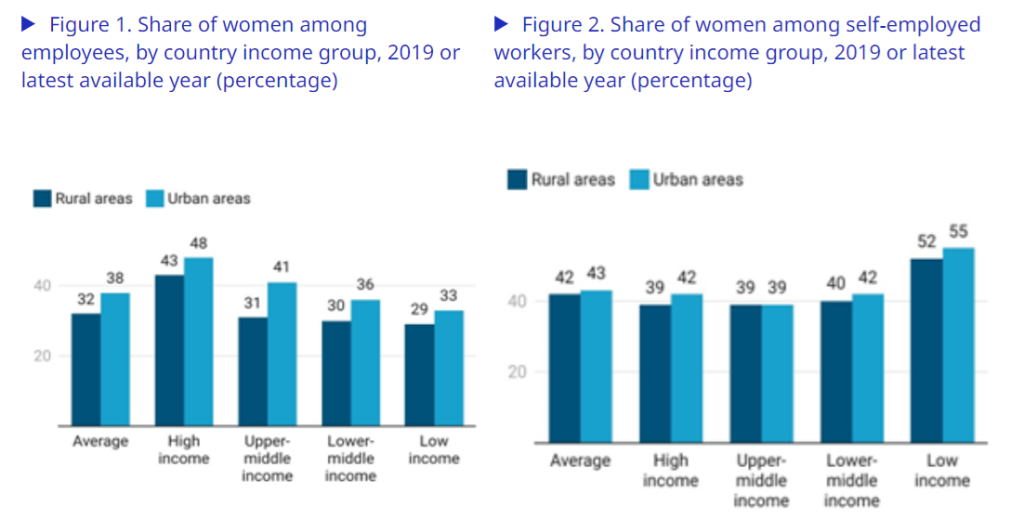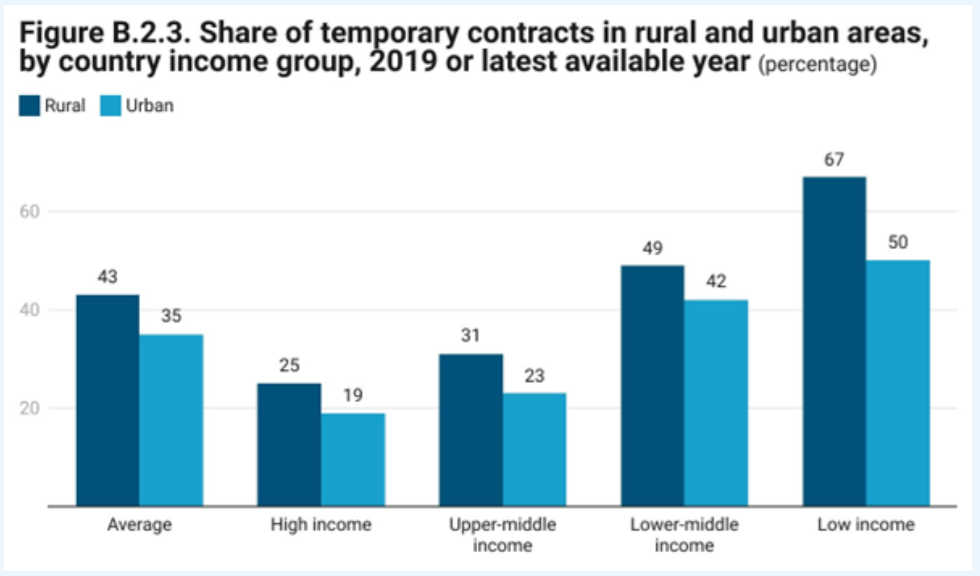
The economic divide between rural and urban areas is a problem that affects millions of people globally. It is a divide that extends beyond geography, touching on aspects of social justice, economic opportunity, and the very fabric of communities. To address the rural-urban divide effectively, there is a need for indepth studies on the complexities behind employment and wage disparities, drawing from a wealth of research and insights from various studies, including the findings of the International Labour Organisation.
At the core of the rural-urban divide is a stark contrast in living standards, employment opportunities, and wages. Rural areas, often characterised by an abundance of agricultural work, face significant challenges. These include limited industrialisation, lower levels of productivity, and a lack of access to education and healthcare. Urban areas, meanwhile, benefit from higher concentrations of economic activity, better infrastructure, and greater access to services, which collectively offer more and better employment opportunities.
READ I Urban unemployment data mask gender gap, quality of work
Root causes of rural-urban divide
A recent ILO working paper, Employment and wage disparities between rural and urban areas, sheds light into the various factors that contribute to the rural-urban disparities, each intertwining with the others to create a complex web of socio-economic challenges.
Lower rural productivity: The productivity gap is a critical issue, with rural areas lagging due to factors such as outdated farming techniques, limited access to technology, and inadequate infrastructure. This gap is not merely a reflection of economic activity but also of the investment in human capital and technological advancement in these areas.


Spatial sorting of firms and workers: Economic activities tend to cluster in urban areas where firms and skilled workers converge, creating a self-reinforcing cycle of growth. This urban bias in economic planning and investment further widens the gap, as rural areas are left with dwindling opportunities and resources.
Discrimination and social inequality: Rural populations often face systemic barriers that limit their opportunities for education and employment. Discrimination based on social origin, caste, ethnicity, or gender can exacerbate these inequalities, making it harder for certain groups to break out of the cycle of poverty and disadvantage.
Case Studies: India and Austria
The ILO paper has surveyed initiatives from around the world, and offers insights into effective strategies for bridging the rural-urban divide.
India’s National Rural Employment Guarantee Scheme has been a success story, offering legal employment rights to rural households and thereby enhancing their income and livelihood security. By focusing on creating infrastructure that benefits the rural economy, the scheme not only provides immediate employment but also contributes to long-term productivity and growth.
Austria’s legislation for gender equality: Austria’s proactive stance on gender equality in rural employment serves as a model for integrating legislative action with social change. By ensuring equal treatment and opportunities for women in the agricultural sector, Austria addresses both the gender and rural-urban disparities in employment and wages.
Strategies for bridging the divide
Addressing the rural-urban disparities requires a multi-pronged approach that includes:
Enhancing rural productivity: Investments in technology, education, and infrastructure are crucial. Access to modern farming techniques, renewable energy, and digital connectivity can transform rural economies, making them more competitive and vibrant.
Promoting fair employment practices: Enforcing anti-discrimination laws and policies that ensure equal opportunities for all, regardless of social origin or demographic characteristics, are essential for bridging the gap.
Fostering economic diversification: Encouraging the development of non-agricultural sectors in rural areas can provide alternative employment opportunities, reduce dependence on agriculture, and stimulate local economies.
Empowering rural workers through education and skills training: Education and vocational training tailored to the needs of the rural economy can equip workers with the skills needed for higher-productivity jobs, both within and outside agriculture.
Strengthening social safety nets: Implementing robust social protection measures can provide a safety net for rural populations, ensuring that they have access to healthcare, education, and a minimum standard of living.
While the challenges of bridging the rural-urban employment and wage disparities are significant, they are not insurmountable. Through targeted interventions, policy reforms, and international cooperation, it is possible to create more equitable economy. By fostering inclusive growth that benefits both rural and urban populations, the policies can create a world where one’s place of birth does not dictate one’s destiny. The journey towards equality is complex and long, but with collective effort and determination, a fairer and more prosperous future is within reach.

